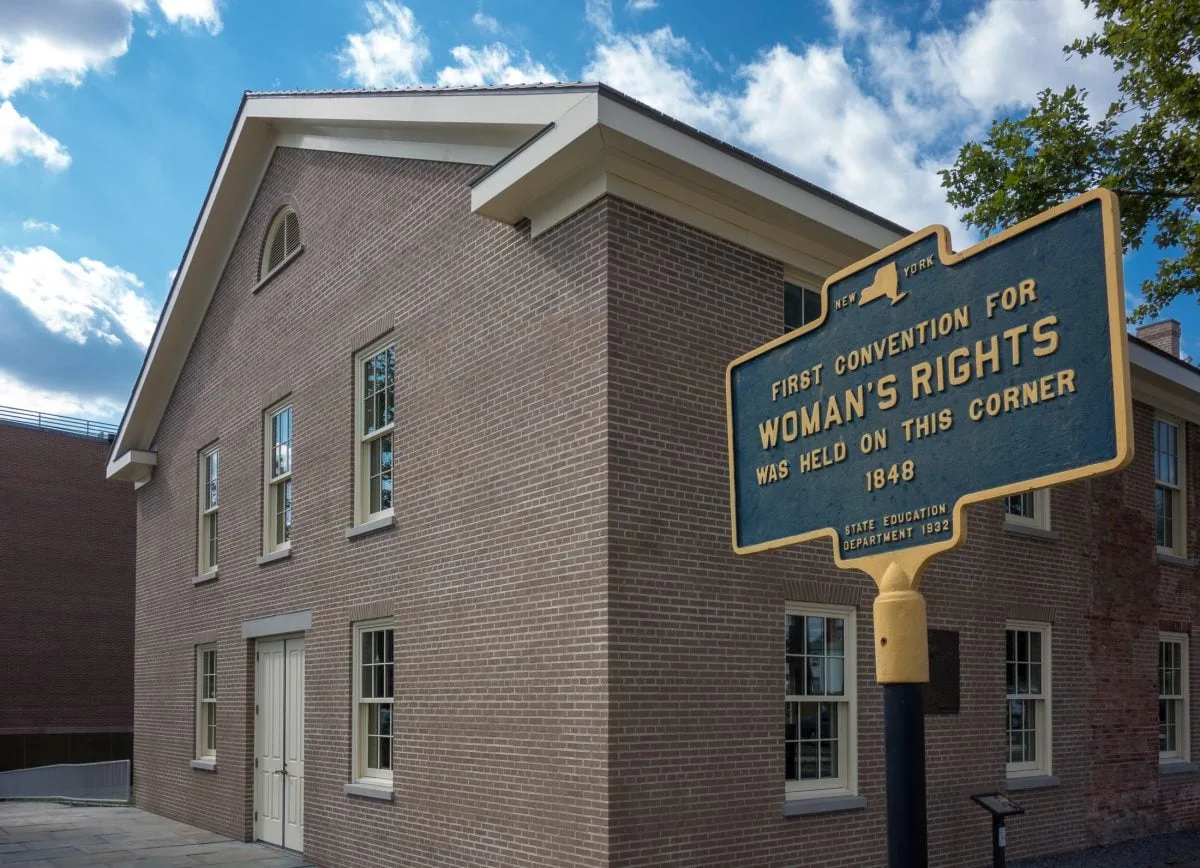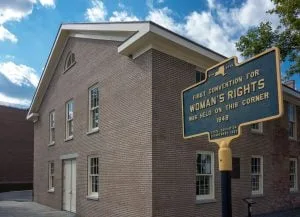Visit the Women’s Rights National Historical Park in Seneca Falls, New York.
History Behind the Women’s Rights Movement
Women’s Rights National Historical Park, in Seneca Falls, tells the story of the first ever Women’s Rights Convention. On July 19-20, 1848, nearly 300 people, women only on the first day, and then men on the second, met to discuss the social, civil and religious rights of women. This historic meeting launched the women’s suffrage movement.
The convention was organized by five women — Elizabeth Cady Stanton, Lucretia Mott, Mary M’Clintock, Martha Coffin Wright, and Jane Hunt. Not only were they fierce defenders of women’s rights but also incredibly active in the abolitionist movement which called for the end to slavery and racial discrimination.
Elizabeth Cady Stanton delivered The Declaration of Sentiments, the manifesto that encapsulated women’s grievances and demands primarily their Constitutional right to equality as citizens of the United States. Stanton boldly asserted women’s equality in politics, family, education, jobs, and more by using a line inspired by the Declaration of Independence: “We hold these truths to be self-evident; that all men and women are created equal.”
What to do at the Women’s Rights National Historical Park
The Wesleyan Chapel is open daily from 9am to 5pm. It is the location of the first ever Women’s Rights Convention. Built in 1843, the two-story structure has been a home for progressive thinkers and activists for years. Beyond the Women’s Convention, Wesleyan Chapel hosted anti-slavery lectures, political rallies, and other free speech events. However, the building was sold by the congregation in 1871 and has undergone several changes throughout the year. In 2009 it was renovated and restored to its approximate 1848 appearance. You can sit in the pews and think about the history of the space or stand by the lectern and read the Declaration of Sentiments.
Visit the homes of Elizabeth Cady Stanton and Mary M’Clintock to learn about their lives, families, and incredible work. Stanton and her husband moved into the home on 32 Washington Street in 1847 and lived there until 1862 with their seven children. The M’Clintock House on 14 East Willians Street was the venue for the planning session of the Women’s Rights Convention and the drafting of the Declaration of Sentiments.
Every week until May 18, at 11 am or 3 pm, a park ranger will guide visitors in “Revolutionary Roots: The 1848 Convention,” and bring visitors along on a guided tour of the grounds while learning about the historic convention.

Photo courtesy of facebook.com/womensrightsnps






